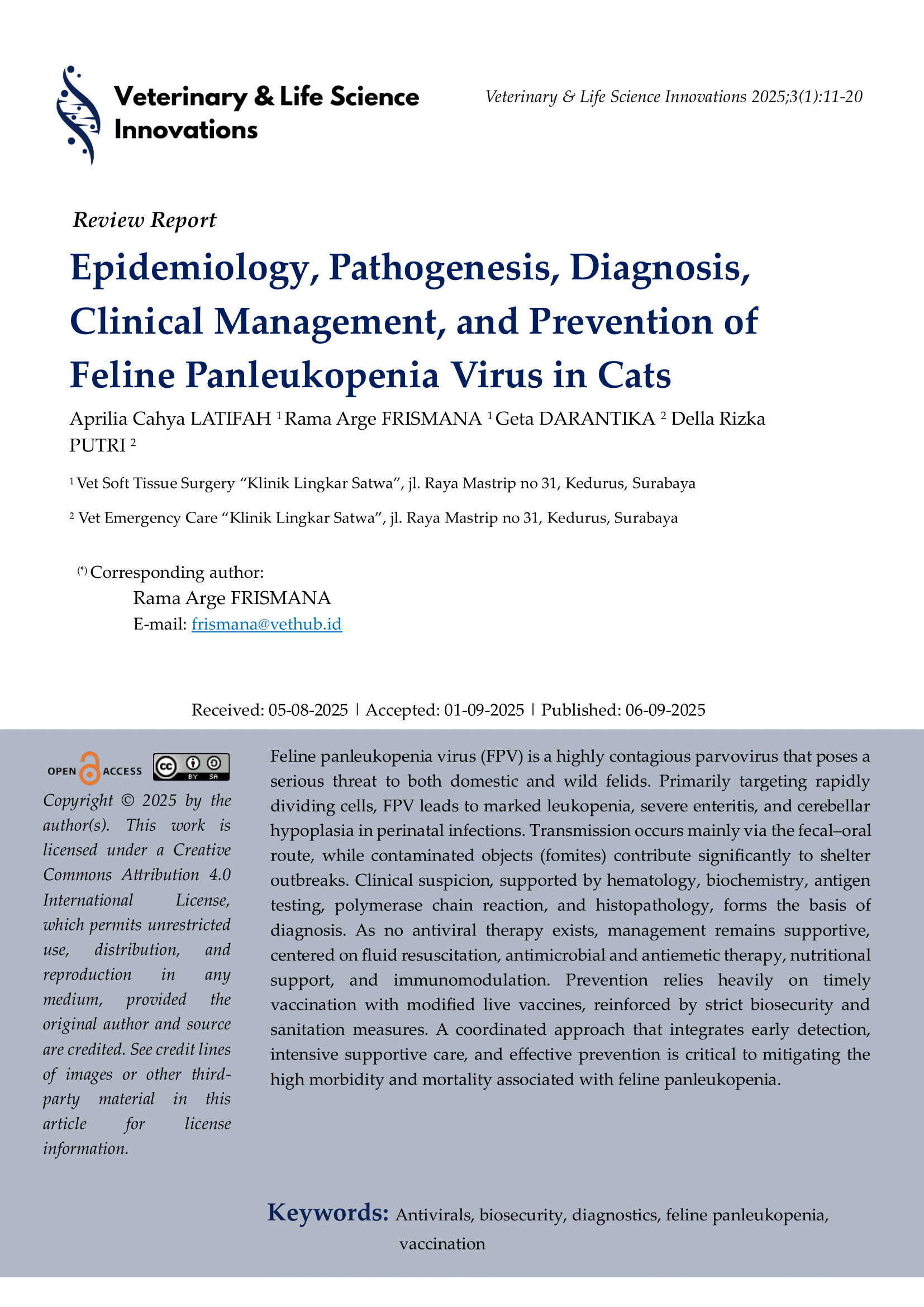Epidemiology, Pathogenesis, Diagnosis, Clinical Management, and Prevention of Feline Panleukopenia Virus in Cats
Keywords:
antivirals, biosecurity, diagnostics, feline panleukopenia, vaccinationAbstract
Feline panleukopenia virus (FPV) is a highly contagious parvovirus that poses a serious threat to both domestic and wild felids. Primarily targeting rapidly dividing cells, FPV leads to marked leukopenia, severe enteritis, and cerebellar hypoplasia in perinatal infections. Transmission occurs mainly via the fecal–oral route, while contaminated objects (fomites) contribute significantly to shelter outbreaks. Clinical suspicion, supported by hematology, biochemistry, antigen testing, polymerase chain reaction, and histopathology, forms the basis of diagnosis. As no antiviral therapy exists, management remains supportive, centered on fluid resuscitation, antimicrobial and antiemetic therapy, nutritional support, and immunomodulation. Prevention relies heavily on timely vaccination with modified live vaccines, reinforced by strict biosecurity and sanitation measures. A coordinated approach that integrates early detection, intensive supportive care, and effective prevention is critical to mitigating the high morbidity and mortality associated with feline panleukopenia.

Downloads
Published
Issue
Section
License
Copyright (c) 2025 Veterinary & Life Science Innovations

This work is licensed under a Creative Commons Attribution-NonCommercial-ShareAlike 4.0 International License.
Veterinary & Life Science Innovations provides open access to ensure that the information and findings in the articles are beneficial to all. All content of this journal article can be accessed and downloaded freely, at no cost, in accordance with the Creative Commons license applied.







